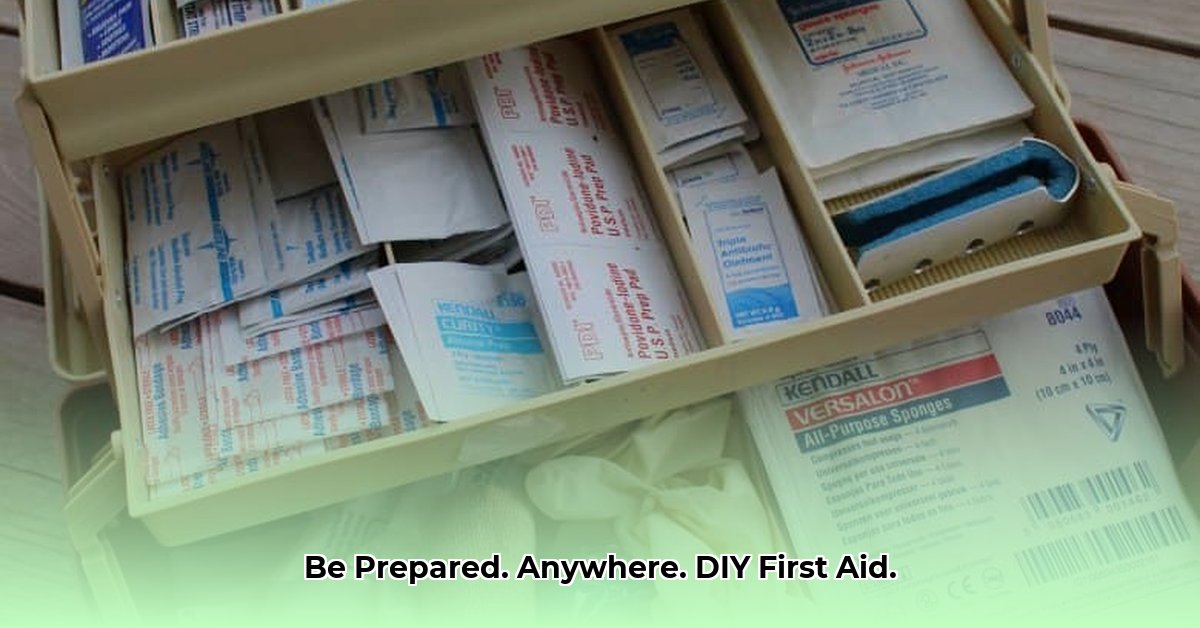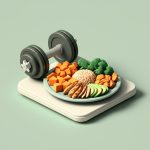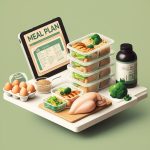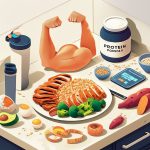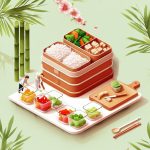Accidents happen. Whether a minor scrape or a more serious injury, a well-stocked first aid kit can transform a frightening situation into a manageable one. This guide provides step-by-step instructions for building your own personalized kit, empowering you to handle emergencies at home, in your car, or on the go.
1. Assessing Your Needs: Tailoring Your Kit
Before diving into supplies, consider your lifestyle and potential risks. A weekend hiker needs different supplies than a city dweller. Ask yourself:
- Where will this kit primarily be used? (Home, car, workplace, backpack)
- Who will use this kit? (Yourself, family, colleagues)
- What activities do you frequently engage in? (Hiking, biking, sports)
- Do you or anyone using this kit have pre-existing medical conditions or allergies?
Identifying potential hazards and individual needs helps create a truly effective kit.
2. Essential Supplies: The Core Components
Every first aid kit should contain these fundamental items:
Wound Care:
- Antiseptic Wipes: BZK-based wipes are often preferred as they are less likely to sting. Research suggests they are just as effective as other antiseptics.
- Assorted Bandages: Include various sizes and shapes: adhesive bandages, knuckle bandages, fingertip bandages, and gauze pads.
- Medical Tape: Choose waterproof tape for better adhesion. Some experts recommend cloth tape for sensitive skin.
- Butterfly Closures: For closing small wounds. Deeper cuts require professional medical attention.
- Antibiotic Ointment: Helps prevent infection. Some studies suggest that overuse may contribute to antibiotic resistance, so use it prudently.
- Blister Treatment: Moleskin, hydrocolloid bandages, or specialized blister pads. Current research explores the most effective blister treatments.
Pain & Allergy Relief:
- Ibuprofen or Acetaminophen: For pain and fever reduction. Consult a doctor before using if you have certain medical conditions.
- Antihistamine (Diphenhydramine/Benadryl): For allergic reactions. Be aware of potential side effects, such as drowsiness.
Tools & Other Essentials:
- Scissors: Small, sharp scissors specifically for first aid use.
- Tweezers: For removing splinters and other foreign objects. Sterilize before each use.
- Safety Pins: Surprisingly versatile for securing bandages or clothing.
- Nitrile Gloves (Non-Latex): Protect yourself and the injured person. Change gloves between treating different individuals.
- CPR Face Shield: Provides a barrier during CPR.
- Instant Cold Pack: Soothes bumps, bruises, and sprains.
- Thermometer: For monitoring fevers. Digital thermometers are generally more accurate.
- First Aid Manual: A pocket-sized guide to common first aid procedures. Digital versions and apps are also available.
3. Building a Kit for Specific Activities: Customized Protection
Beyond the essentials, tailor your kit for special activities:
Hiking/Camping:
- SAM Splint: Lightweight and moldable for immobilizing fractures and sprains. Proper training is recommended for effective use.
- Water Purification Tablets: Essential for ensuring safe drinking water in the wilderness. Research the specific tablets best suited for your environment.
- Whistle: For signaling for help in emergencies.
- Emergency Blanket (Space Blanket): Retains body heat in cold conditions.
Travel:
- Motion Sickness Medication: If you are prone to motion sickness. Consult a doctor or pharmacist about the best option for you.
- Anti-Diarrheal Medication: Addresses traveler’s diarrhea. Consult a doctor or pharmacist about appropriate medications and usage.
- Insect Repellent: Choose a repellent appropriate for your destination, considering potential disease risks.
Car Emergency Kit: Roadside Ready
In addition to medical supplies, a car kit should include roadside emergency tools:
- Jumper Cables: For jump-starting a dead battery.
- Spare Tire, Jack, and Lug Wrench: Essential for changing a flat tire.
- Tire Pressure Gauge: Ensures proper tire inflation.
- Flashlight with Extra Batteries: Provides visibility at night.
- Reflective Triangle: Warns other drivers of your presence.
- Bottled Water and Non-Perishable Food: For unexpected delays.
4. Organizing Your Kit: Taming the Chaos
A well-organized kit is essential for quickly finding supplies in an emergency:
- Clear, Labeled Bags: Group similar items together (wound care, medications, tools) in zip-top bags.
- Waterproof Container: Protects supplies from moisture. A clear container allows easy viewing of contents.
- Logical Arrangement: Place frequently used items at the top for easy access. Consider a laminated index card listing the contents and their locations.
5. Maintaining Your Kit: Staying Prepared
Regular maintenance ensures your kit is always ready:
- Expiration Date Checks: Check all medications and supplies for expiration dates at least twice a year.
- Replenishment: Replace used items promptly after each incident.
- Regular Inventory: Periodically review the contents and update as needed.
6. First Aid Training: Knowledge is Power
A well-stocked kit is most effective when combined with first aid knowledge. Consider taking a certified first aid and CPR course. This will provide you with the skills and confidence to handle various emergencies, including:
- Wound Care and Bandaging: Properly cleaning and dressing wounds to minimize infection risk.
- Splinting Techniques: Stabilizing injuries to prevent further damage.
- Recognizing Serious Conditions: Identifying symptoms of conditions like allergic reactions, heatstroke, and hypothermia.
- CPR: Performing cardiopulmonary resuscitation in life-threatening situations. [Link to American Red Cross or similar organization offering CPR training]
Building a first aid kit is an ongoing process. Reassess your needs periodically and update your kit accordingly. Remember, this guide provides general information. Consult with a healthcare professional for specific medical advice.
- Simple Bulking Meal Ideas to Maximize Your Gains - November 16, 2025
- Hearty Bulking Meal Prep Recipes For Serious Muscle Gains - November 15, 2025
- Delicious Bulking Recipes for Enjoyable Muscle Building and Gains - November 14, 2025
